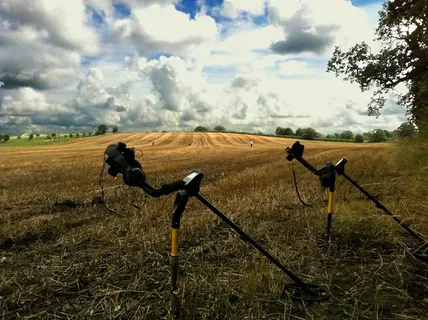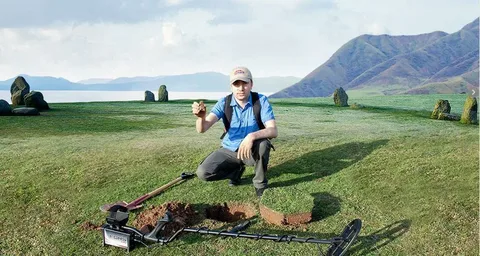Gold associations have played a significant role in the history of humanity, with their origins tracing back to ancient civilizations and continuing to shape societies and economies to this day. Uncovering the fascinating history of gold associations provides insights into the ways in which these organizations have influenced global trade, political power, and cultural practices throughout the ages. Through exploring the evolution of gold associations, we can gain a deeper understanding of the enduring allure and impact of gold on human civilization.
Uncovering the fascinating history of gold associations involves delving into the ancient civilizations that first prized and utilized this precious metal. Gold has played a central role in the economies and cultures of many societies throughout history, from the ancient Egyptians and Greeks to the Spanish conquistadors and the modern global gold trade. Understanding the historical significance and evolution of gold associations provides valuable insights into the enduring allure and enduring value of this coveted metal.
The Role of Gold Associations in the Jewelry Industry

Gold associations play a crucial role in the jewelry industry by promoting and representing the interests of gold producers, manufacturers, and retailers. They work to establish industry standards, promote ethical sourcing and manufacturing practices, and advocate for the use of gold in jewelry. Gold associations also provide resources and support to members, including education, networking opportunities, and market research. Additionally, they may engage in marketing and promotional activities to raise awareness and demand for gold jewelry. Overall, gold associations play a vital role in the sustainability and growth of the jewelry industry.
Building Strong Partnerships: Gold Associations and Mining Companies

Building strong partnerships between gold associations and mining companies is essential for driving sustainable growth and responsible mining practices within the industry. These partnerships can lead to shared expertise, resources and knowledge exchange, as well as collaborative efforts on initiatives such as environmental stewardship, community engagement, and health and safety standards. By working together, associations and companies can also address common challenges and advocate for policies that benefit the entire industry. Strong partnerships can ultimately lead to a more cohesive and prosperous gold mining sector.
Gold Associations: Advocating for Responsible Mining Practices

Gold Associations advocate for responsible mining practices by working with their member companies to ensure that they adhere to strict environmental, social, and governance standards. These associations often develop and promote industry-wide best practices and standards for responsible mining, transparent reporting, and sustainable development. They also work with governments, communities, and other stakeholders to promote responsible investment and development in the gold mining sector. Additionally, they may provide training and resources to help member companies improve their environmental and social performance. Overall, these associations play a crucial role in promoting sustainable and responsible mining practices within the gold industry.
Empowering Artisanal Miners: The Work of Gold Associations

Empowering Artisanal Miners: The Work of Gold Associations aims to improve the working conditions, environmental practices, and social welfare of artisanal and small-scale gold miners. This involves collaborating with local miners to provide training in responsible mining practices, access to formalized markets, and support for community development initiatives. The goal is to create a more sustainable and ethical gold mining industry while improving the livelihoods of those involved in the sector.
Promoting Sustainable Development: The Mission of Gold Associations
Promoting sustainable development is a key mission of gold associations around the world. These associations work towards ensuring that gold mining activities are carried out in an environmentally and socially responsible manner. This includes promoting best practices in environmental management, working towards reducing the carbon footprint of gold mining, and supporting initiatives that benefit local communities and economies. Additionally, gold associations often collaborate with governments, NGOs, and other stakeholders to develop and uphold industry standards and regulations that contribute to sustainable development. By prioritizing sustainability, gold associations aim to minimize the negative impacts of gold mining while maximizing its positive contributions to society and the environment.
Navigating Market Challenges: The Support of Gold Associations
Navigating Market Challenges: The Support of Gold Associations focuses on the role of gold associations in aiding member companies to navigate through market challenges such as price volatility, regulatory changes, and geopolitical uncertainties. The support provided by these associations includes offering market intelligence, lobbying for favorable policies, and promoting responsible gold mining practices. Additionally, they facilitate networking and knowledge-sharing among member companies to foster industry innovation and collaboration. Overall, the support of gold associations is crucial for companies to adapt and thrive in the ever-changing gold market landscape.
Fostering Innovation: Collaborations with Gold Associations
See also: gold detector
Fostering Innovation: Collaborations with Gold Associations is a program designed to encourage collaboration between companies and gold associations to drive innovation in the industry. The program aims to support and promote joint research, development, and technology initiatives that can benefit the gold industry as a whole. By bringing together companies and associations, the program seeks to create an environment where new ideas and technologies can be shared and developed, ultimately leading to the advancement of the gold industry. Through this collaborative approach, the program also aims to enhance sustainability, efficiency, and competitiveness within the sector.
Gold Associations and Ethical Sourcing: A Growing Trend
Gold associations play a crucial role in promoting ethical sourcing within the gold industry. They work to develop standards and guidelines for responsible mining and sourcing practices, as well as provide support and resources for companies looking to adopt ethical sourcing principles. This includes promoting fair labor practices, minimizing environmental impacts, and ensuring that gold is sourced from conflict-free areas.
One of the key trends in the gold industry is the growing emphasis on ethical sourcing. Consumers, investors, and governments are increasingly demanding transparency and accountability in the supply chains of precious metals like gold. This has led to a greater emphasis on responsible sourcing practices within the industry, with many companies and associations actively working to obtain and maintain responsible sourcing certifications.
Ethical sourcing of gold is not only important for meeting regulatory requirements and consumer expectations, but also for ensuring the long-term sustainability of the industry. By promoting responsible mining and sourcing practices, gold associations are contributing to the protection of workers, communities, and the environment, and ultimately helping to maintain the integrity and value of gold as a precious metal.
Industry Standards and Guidelines: The Impact of Gold Associations
Industry standards and guidelines play a crucial role in the gold mining industry, helping to ensure environmental sustainability, ethical practices, and responsible resource management. Gold associations, such as the World Gold Council and the Responsible Jewellery Council, have been instrumental in developing and promoting these standards. Their efforts have helped to improve transparency and accountability within the industry, while also addressing social and community development issues. By adhering to these industry standards, gold associations and mining companies can build trust with stakeholders, enhance their reputation, and contribute to a more sustainable and ethical gold mining sector. Overall, the impact of gold associations on industry standards and guidelines has been significant, driving positive change and raising the overall performance of the gold mining industry.
The Future of Gold: Insights from Leading Association Members
The Future of Gold: Insights from Leading Association Members is a report that provides perspectives from key industry figures on the future of gold and its role in the global economy. It covers topics such as market trends, investment opportunities, technological advancements, and regulatory considerations. The report offers valuable insights and analysis for anyone interested in understanding the future outlook for gold.









